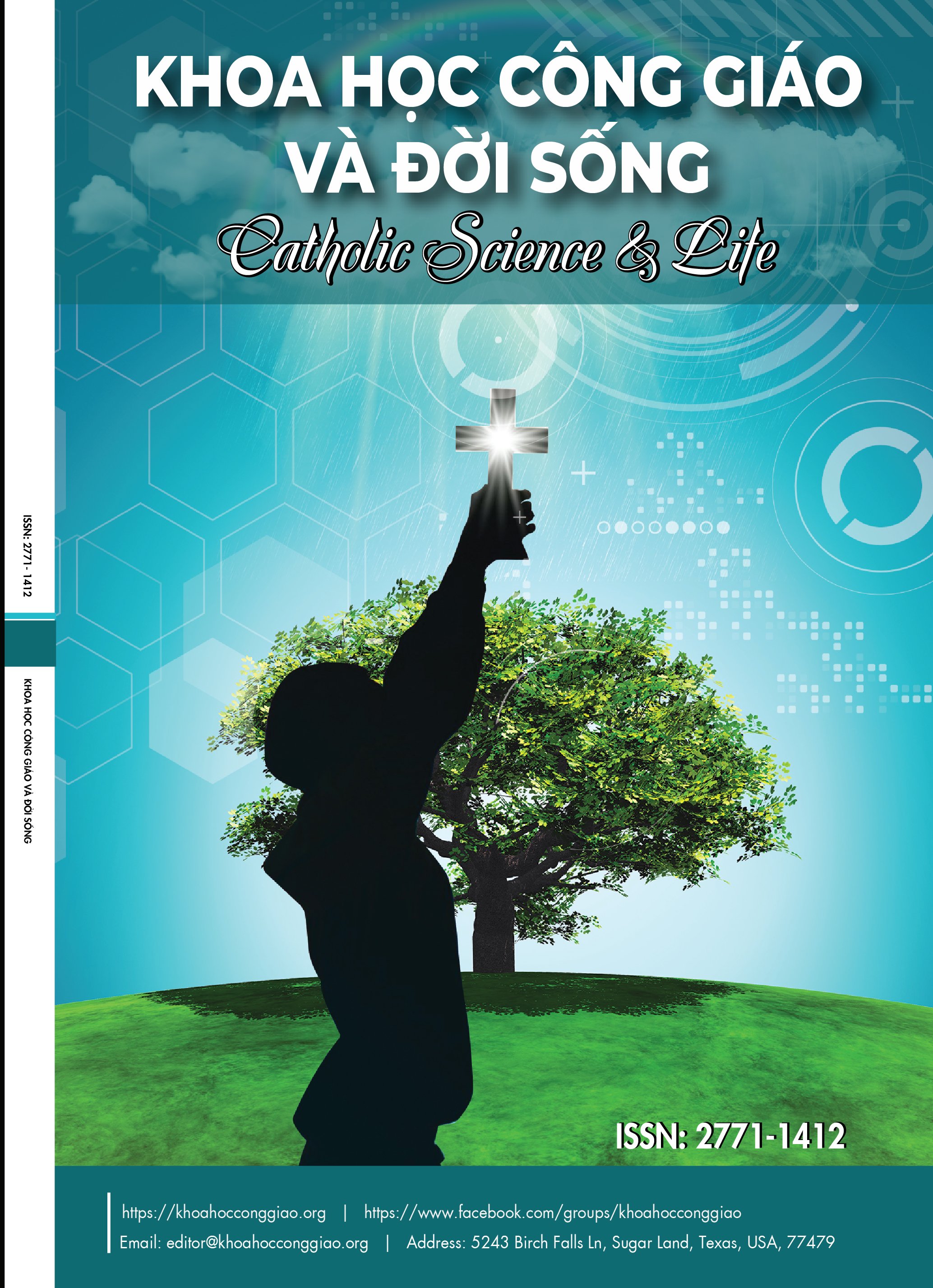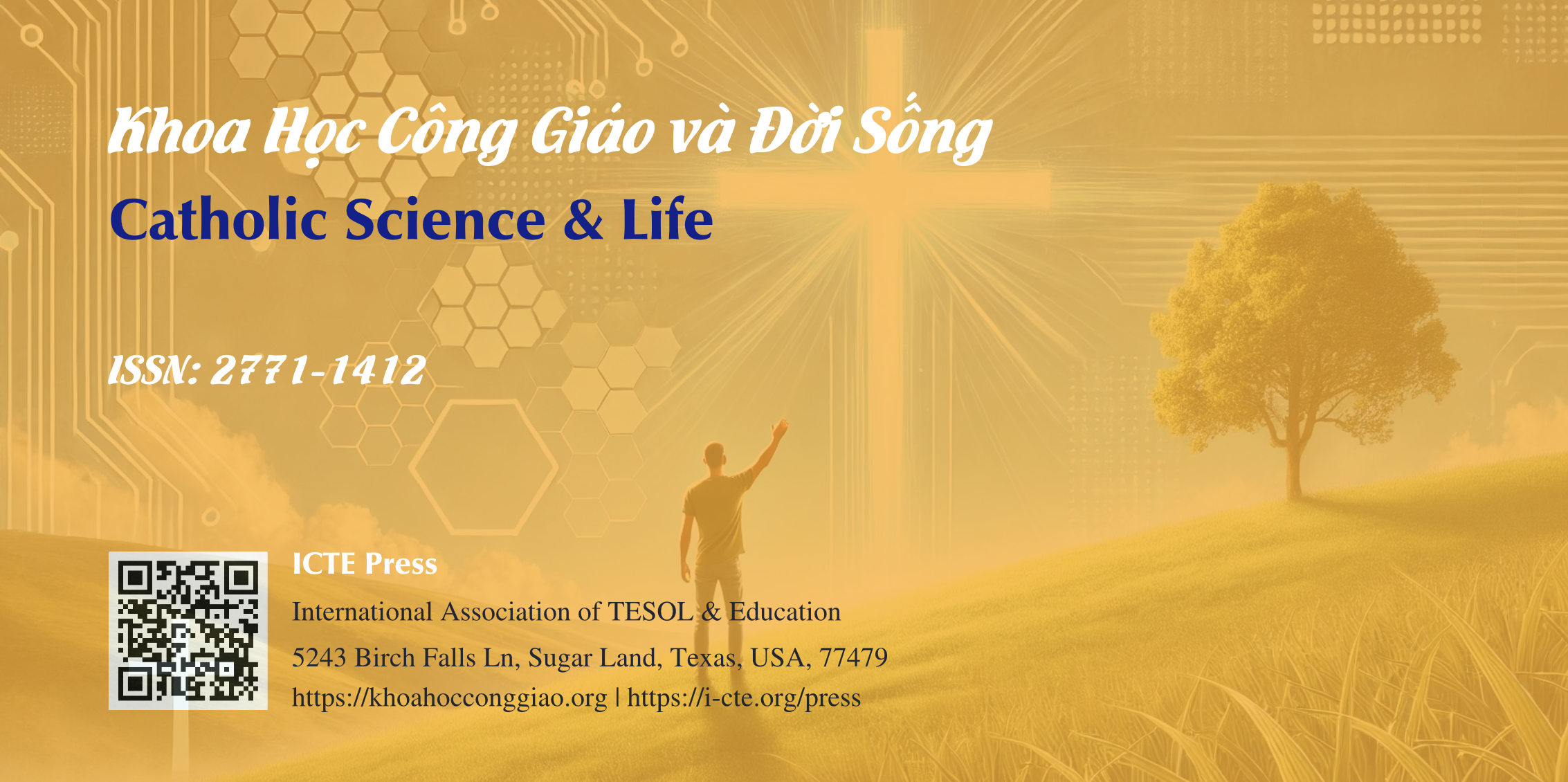Phép Rửa cho Kẻ Chết đối với các Tín Hữu Côrintô
Baptism for the Dead according to the Believers of Corinth
DOI:
https://doi.org/10.54855/csl.24437Từ khóa:
sự phục sinh, Đức Kitô, Tin Mừng, sự chết, đức tin, hy vọngTóm tắt
1 Cr 15 kết thúc bằng một tin vui cho toàn thể Kitô hữu đó là thân xác kẻ chết sẽ được sống lại. Nếu Đức Kitô đã chết và phục sinh thì đến lượt “các chi thể” của Ngài cũng được phục sinh do ân huệ của Chúa ban cho. Xác tín này hẳn khởi đi từ những khẳng định căn bản rằng nhờ phép rửa tội, tín hữu được nên giống Chúa Kitô. Tuy nhiên, câu 1 Cr 15,29 khiến ta không khỏi ngạc nhiên vì nó đề cập đến việc chịu phép rửa thế cho kẻ chết. Thánh Phaolô muốn nói gì về vấn đề này? Bài viết này là một cố gắng truy tìm về nguồn gốc của 1 Cr 15,29 nhằm tìm hiểu và đào sâu tư tưởng của Phaolô về sự phục sinh, về thân xác kẻ chết được sống lại. Bố cục bài viết, trước tiên là xác định bối cảnh bản văn 1 Cr 15,29. Sau đó, bằng kỹ thuật phê bình các bản dịch để thấy sự khác biệt giữa chúng so với bản văn Hy Lạp. Mục đích là xét xem có phải Phaolô đề cập việc “rửa tội thay cho kẻ chết” hay không. Cuối cùng là một vài nhận định riêng xoay quanh những chất vấn liên quan đến câu 1 Cr 15,29 và để hiểu tư tưởng của Phaolô muốn dạy người Kitô hữu đương thời.
Abstract
1 Corinthians 15 concludes with good news for all Christians: the bodies of the dead will be resurrected. If Christ died and was resurrected, then His "members" will also be resurrected by God's grace. This conviction likely stems from the fundamental assertion that through baptism, believers are made to resemble Christ. However, 1 Corinthians 15:29 surprises us, as it mentions being baptized on behalf of the dead. What does Saint Paul mean by this? This article attempts to trace the origins of 1 Corinthians 15:29 in order to understand and explore Paul's thoughts on resurrection and the resurrection of the dead. The structure of the article first determines the context of the text in 1 Corinthians 15:29. Then, using translation criticism techniques, it examines the differences between various translations and the Greek text. The aim is to determine whether Paul was indeed referring to "baptism for the dead." Finally, the article offers some personal reflections on the questions surrounding 1 Corinthians 15:29 and on understanding Paul's teachings for contemporary Christians.
Tài liệu tham khảo
Vocabulaire de Théologie Biblique, 2eme édit, (Paris: Cerf , 1971), Việt ngữ: Điển Ngữ Thần Học Thánh Kinh III, dịch bởi Phân Khoa Thần Học Giáo Hoàng Học Viện Thánh Piô X-Đà Lạt (Sài Gòn: Nxb. Nguyễn Bá Tòng, 12-1975), 261.
Raymond F. Collins, Firt Corinthians, trong Sacra Pagina, vol. 7 do Daniel J. Harrington editor, (American: Collegeville, Minnesota, The Liturgical Press, 1999), 556.
Mormon Church trong tiếng Việt là Mặc Môn hoặc là Giáo hội Các Thánh Hữu Ngày Sau của Chúa Giêsu Kitô, viết tắt là LDS Church tin rằng Joseph Smith là vị ngôn sứ thời sau cùng. Họ thực hiện phép rửa cho người chết. X. Bernadette Rigal Cellard, La Religion des Mormons (Paris: Albin Michel, 2012), 26-34.
Michel F. Hull, “Baptism on Account of the Dead (1 Cr 15:29), An Act of Faith in the Resurrection”, Society of Bibliceal Literature Academia Biblica, No.22 (ISSN 1570-1980): 3-10.
Hans Conzelmann, First Corinthians: Acommentary on the First Epistle to the Corinthians, 1st edition by George W and S.J. MacRae, (Philadelphia: Fortress Press, 1988), 252.
Tải xuống
Đã Xuất bản
Số
Chuyên mục
Giấy phép
Bản quyền (c) 2024 Đoàn Văn Sinh, A.A.

Tác phẩm này được cấp phép theo Giấy phép quốc tế Creative Commons Attribution-NonCommercial 4.0 .
Authors retain copyright and grant the journal the right of first publication with the work simultaneously licensed under a Creative Commons Attribution 4.0 International License that allows others to share the work with an acknowledgment of the work's authorship and initial publication in this journal.
Authors are able to enter into separate, additional contractual arrangements for the non-exclusive distribution of the journal's published version of the work (e.g., post it to an institutional repository, in a journal or publish it in a book), with an acknowledgment of its initial publication in this journal.













